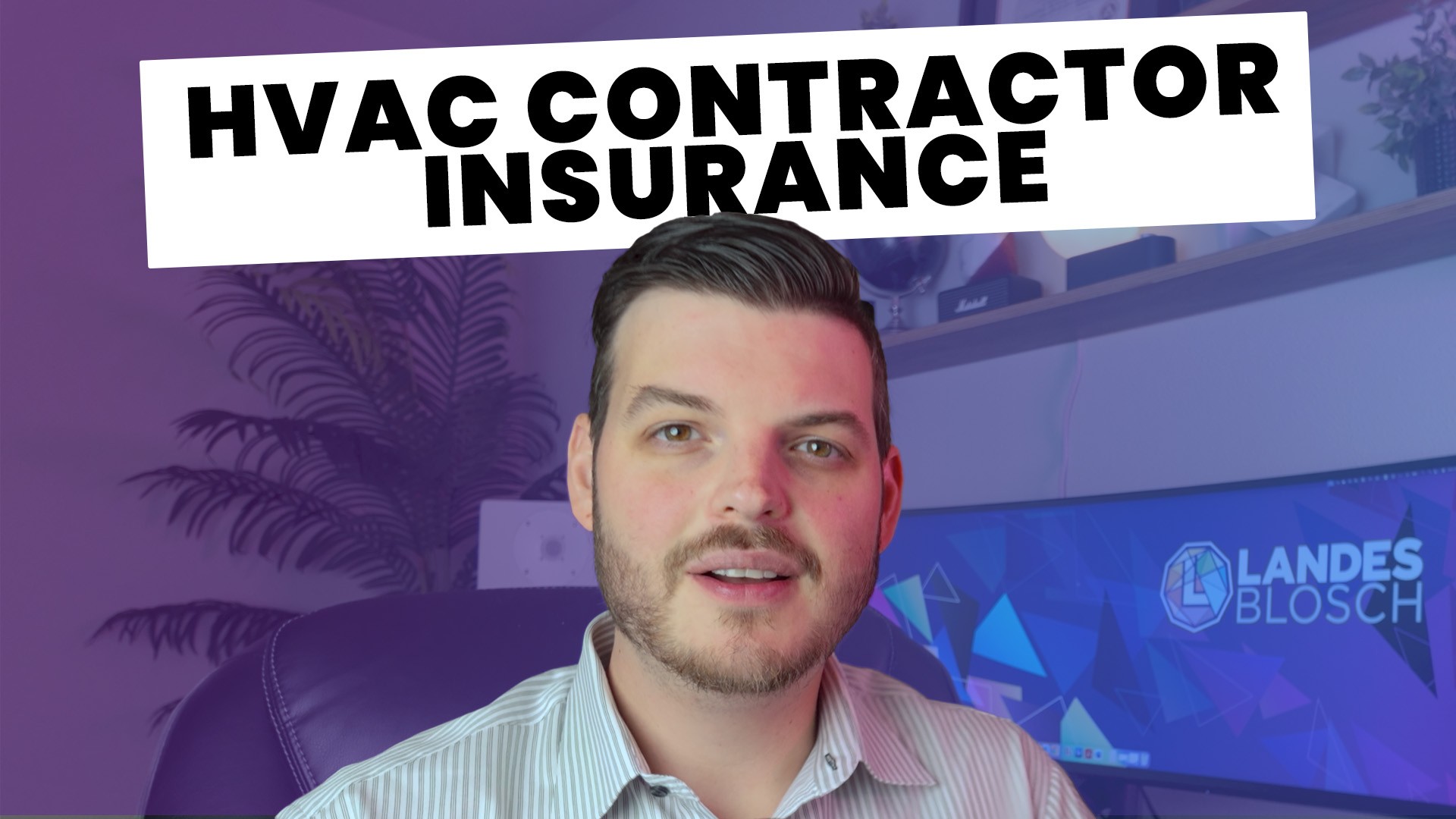
General Liability (GL) InsuranceCommercial Auto InsuranceCommercial Umbrella InsuranceWorkers Compensation InsuranceContractor's Tools & Equipment Insurance
What Does HVAC Contractor Insurance Cost? (What You Need & Real Prices)
·
5 minute read
HVAC work has real risk. Open flames and brazing, gas lines, rooftops, refrigerants, and water lines can turn into a fire, a leak, a roof puncture, or even a carbon‑monoxide injury at your client’s property. Fair or not, if something goes wrong on a jobsite, you are often the first one blamed. A poorly written policy can be worse than no policy at all. It can leave your business, and sometimes your personal assets, exposed.
This guide cuts through the noise. You will see the core coverages HVAC contractors actually need, the traps that cause claims to be denied, and real‑world pricing examples you can use to benchmark your program. There is also a copy‑and‑paste checklist you can hand to any agent to get solid, claims‑ready coverage at a fair price.
Why HVAC Contractors Need Insurance
- Fire & property‑damage liability. Brazing and open flames create real fire exposure. Water lines, condensate, and roof penetrations can cause costly damage, sometimes long after you have left the site.
- Bodily injury risks. From ladder falls to heat stress to CO exposure, injuries to third parties (and employees) are a reality in this trade.
- Completed‑operations claims. Weeks or months after a job, an undiscovered issue with venting, gas lines, or condensate can lead to six‑figure losses.
- Contract & licensing requirements. GCs, owners, and many licensing boards require certificates of insurance (COIs), additional insured status, waivers, and sometimes job‑specific umbrellas before you can bid or pull a permit.
- Tools & equipment theft. Press tools, gauges, recovery machines, and copper “walk away” from jobsites and trucks.
The Problems HVAC Owners Ask Us To Solve
- COIs & compliance quick turnaround on additional insured, primary & noncontributory, waiver of subrogation, and per‑project aggregate wording.
- Lawsuit protection for water damage, fire, CO exposure, and other injuries.
- Flexibility to bid larger jobs (and meet higher limit requirements fast).
- Bonding for license or permit needs and performance and payment bonds on bigger projects.
The Coverages You Actually Need
General Liability (GL)
Your first line of defense for third‑party bodily injury and property damage both on‑site and after completion. This is also where most compliance requests live (additional insured, waivers, primary & noncontributory, per‑project aggregates).
Workers’ Compensation
Pays employee medical bills and lost wages for work injuries. Required in most states when you have employees.
Commercial Auto
Covers liability and physical damage for your service vans, pickups, and box trucks (and any towed lifts/trailers).
Inland Marine / Tools & Equipment
Protects tools, press machines, recovery units, and rented equipment on jobsites and in transit.
Umbrella / Excess Liability
Adds 1 million to 10 million or more of extra limits above GL, Auto, and Employers Liability. Common for municipal or large GC work.
Coverage Traps That Deny HVAC Claims (Read the Endorsement Page)
Bad policies stay cheap by carving out the very claims you’re most likely to file. Scan the endorsements and push back on:
- Operations / “Designated Work” limitations. Coverage only applies to an ultra‑narrow business description.
- Subcontractor Warranty. Voids or limits coverage if a sub’s insurance lapses or doesn’t meet strict terms (easy to trip).
- Hot work, brazing, roofing/rooftop exclusions. Commonly used to avoid exactly the fire losses HVAC contractors face.
- Independent‑contractor / labor‑only exclusions. Strips protection when you 1099 extra help.
Real Pricing Examples for HVAC Contractors
Pricing truly varies by state, payroll, vehicles, loss history, and whether you are primarily service or heavy install or residential or commercial. The examples below come from strong carriers without junk exclusions. Use them as ballparks, not promises.
| Payroll | Autos | General Liability | Workers Comp | Auto | Annual Total | Monthly Cost |
|---|---|---|---|---|---|---|
| Owner Only | 0 | $1,123 | NA | NA | $1,123 | $93 |
| $50,000 | 1 | $2,016 | $1,320 | $1,826 | $5,162 | $430 |
| $125,000 | 3 | $3,289 | $2,671 | $5900 | $11,860 | $988 |
The Bottom Line
HVAC carries real risk, but insuring it does not have to be complicated. Pair a comprehensive GL with Workers’ Comp, Commercial Auto, Inland Marine, and an Umbrella, and you will cover the vast majority of the claims HVAC contractors face. Spend your energy on getting the exclusions right and keeping COIs clean, not on chasing the lowest sticker price.
HVAC Contractor Insurance FAQ
Coverages Referenced In This Article
Keep reading to learn more about the coverages referenced in this article.
About The Author: Austin Landes, CIC
Austin is an experienced Commercial Risk Advisor specializing in and leading LandesBlosch's design professional, real estate, and construction teams.





